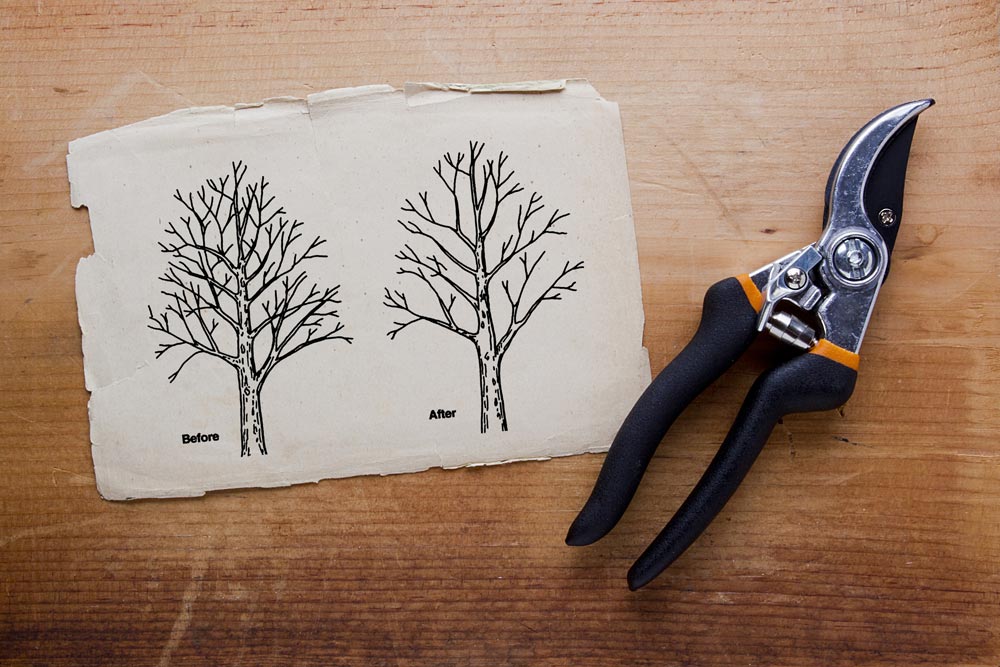Ordinarily, you may think of tree pruning as commonplace maintenance intended to ensure the health and safety of your trees and property, and you’d be right. Regular pruning yields many benefits that can prolong the life of a tree by enabling strong tree structure and growth while minimizing risk due to dead or weak branches.
But did you know that tree pruning can be closely associated with fire safety? It’s true, denying your trees regular pruning or care increases the potential for the spread of fire due to low lying branches and excess yard waste (leaves/bark/sticks). Why delay when you could start today.
Know the Risks
A great start will begin with identifying problem areas and tree health to determine which trees may be most susceptible to fire.
Signs of a distressed tree:
- Excessive leaf loss or leafless branches
- Frail bark falling off tree
- Falling limbs that are dry or brittle
- Noticeable rot or fungus growth
A dying tree can be a fire hazard and if so should be removed immediately. An experienced arborist will help you to identify and address potential hazards.
Proper Tree Spacing
Vertical Spacing
Is the removal of “ladder fuels” – branches and vegetation that create a link between the ground and the treetops. It is recommended to remove all tree branches at least 6 feet off the ground for lone trees and if there are nearby shrubs or bushes to allow even more space by trimming branches to provide clearance that is 3 times the height of the shrub or bush.
Horizontal Spacing
If multiple trees are near one another, there should ideally be at least 10 feet of horizontal clearance between the branches of other trees or structures (house/garage/deck).
This distance is increased when dealing with trees on a slope as follows:
- Flat or Mild Slope: 10 feet
- Mild or Moderate Slope: 20 feet
- Moderate or Steep Slope: 30 feet
The general idea of tree spacing is to create adequate and clear space between trees/shrubs to slow or even prevent the spread of wildfire on your property.
Defensible Space
The California Department of Forestry and Fire Protection (Cal Fire) have in place recommended guidelines for safeguarding property against wildfire. The primary goal is to create what is known as “Defensible Space” or a buffer zone surrounding your property that is clear of overgrown or thick vegetation that may accelerate the spread of wildfire.
Cal Fire advocates that this space extends 100 feet from your home and other structures on your property and is divided into two zones.
Zone 1
30 feet from structures
- Regularly trim trees keeping branches 10 feet away from other trees/structures
- Remove all dead or dry vegetation
- Provide clear space between trees, bushes, and other flammable items (patio furniture, sheds, swing sets)
Zone 2
30 to 100 feet from structures
- Create horizontal spacing between trees and bushes
- Create vertical spacing between trees and ground
- Cut grass to a maximum height of 4 inches
Plain and simple, a fire needs fuel to continue burning. Dead and dry vegetation will allow a fire to sustain itself and travel from one location to the next. For more information about Cal Fire and defensible space, click here.
We Are A Full-Service Tree Care Company
With over 20 years of experience, the experts at Vintage Tree Care specialize in tree pruning and other arboricultural services. Please call or contact us online and request an Estimate. Together we can answer any questions you may have and get your property prepared for wildfire.
The comments are closed.



No comments yet